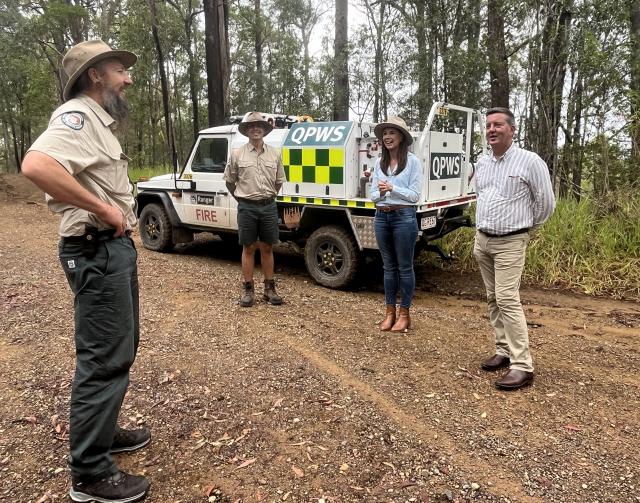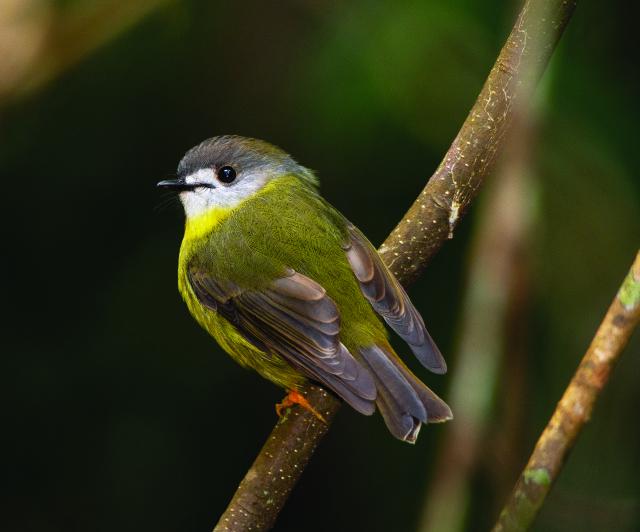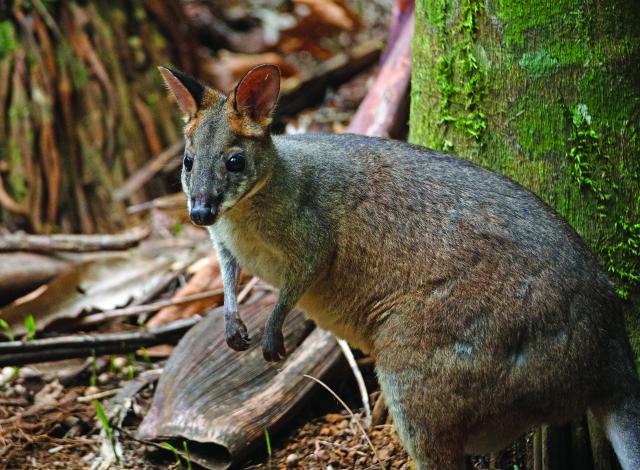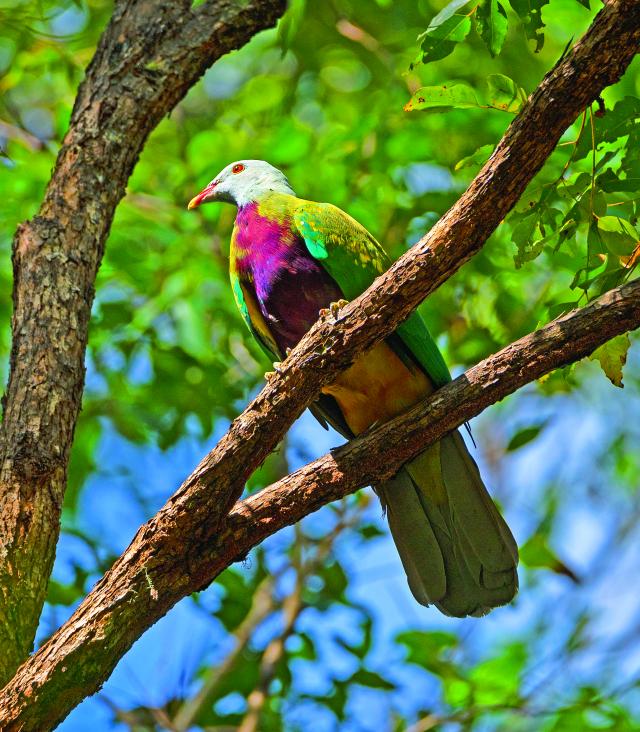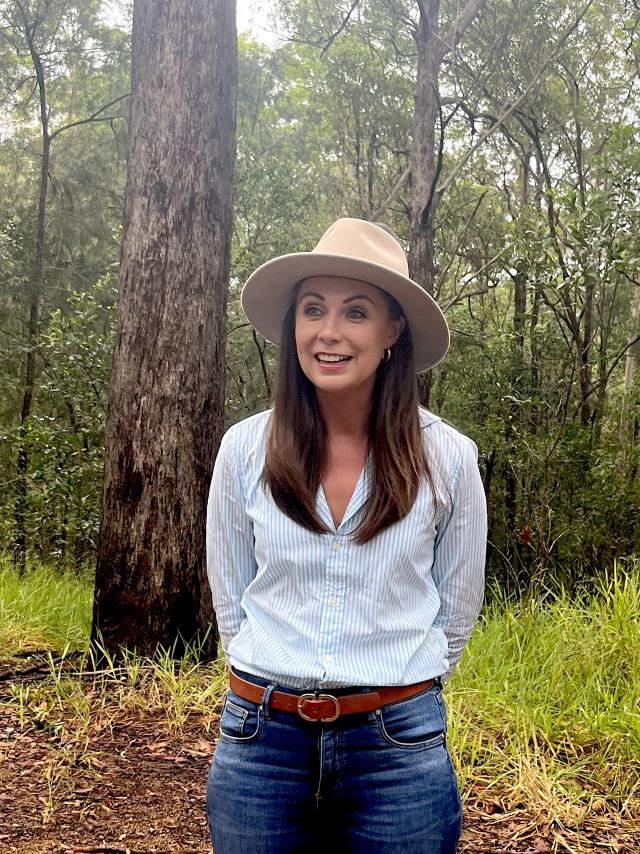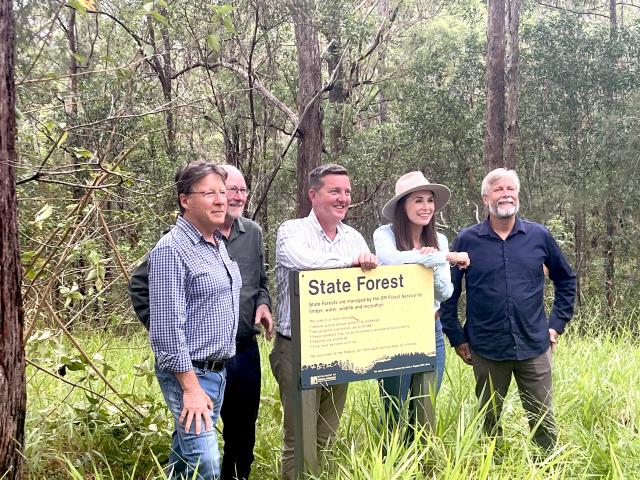
Noosa’s newest national park is full of uncommon and at-risk wildlife species, and well-maintained paths that wind through sclerophyll and rainforest habitats, and this one’s on the house.
While last year’s landmark 2400-hectare Yurol-Ringtail forest hand-over came with a price tag of $3.5 million (funded equally by the state, Noosa Council and Noosa Parks Association), the conversion of the 1150-hectare West Cooroy State Forest to national park, with no plantation rights to buy, cost nothing other than the blood, sweat and tears of conservationists and true believers over almost a quarter-century.
Ironically, while Yurol-Ringtail, the vital completion of Noosa’s crescent of green where the final logging contracts have just been completed, was handed over in front of TV cameras and real, live, piddling koalas, the completion of the 24-year journey at West Cooroy was celebrated last week by a handful of people standing in the drizzle at the edge of what looks like an unremarkable forest.
But the new West Cooroy National Park is full of surprises, a fact well known to a couple of long-time campaigners who joined Environment Minister Meaghan Scanlon, Nicklin MP Rob Skelton and Noosa councillor Tom Wegener at the site.
Nominated for listing as a national park in the 1999 South East Queensland Regional Forest Agreement, West Cooroy was mysteriously sidelined a couple of years later, although Noosa Parks Association kept beating the drum for it at every opportunity. However, when former Noosa mayor Tony Wellington was elected to the amalgamated Sunshine Coast Council in 2012, he renewed the battle at local and state level.
He recalls: “It was always part of the big picture approach of converting local state forests into national parks, a vision that dates back to Dr Arthur Harrold and the Noosa Parks Association in the 1960s. Indeed, NPA has had West Cooroy State Forest on their radar for many decades.
“When I was elected to the Sunshine Coast Council, a development proposal was submitted for an intensive chicken broiler farm on Top Forestry Road which leads into West Cooroy State Forest, so consideration had to be given to use of that road by trucks, and obviously logging trucks played into the discussion, although there was little or no logging happening at the time.
“Local residents who were opposed to the broiler farm development were also keen to see the forest become part of the conservation estate as national park.”
In 2014 Cr Wellington made representations to then Member for Nicklin Peter Wellington to secure his support for the transfer to national park. He was agreeable so the lobbying began in earnest.
His successor in the seat of Nicklin, Labor’s Rob Skelton, continued the pressure, leading to West Cooroy’s inclusion in a long list of state forest transfers announced by Minister Scanlon last month.
But the path to the transfer was a bumpy one.
Says Tony Wellington: “When I became mayor of Noosa [2016] I was already talking to the state government about West Cooroy when the Yurol/Ringtail deal was brought to us by Noosa Parks Association. As it was a complicated matter – a four way partnership between two levels of government, a community organisation and HQ Plantations – and involved significantly more land, that project took precedence and West Cooroy had to become a lesser priority.
“But I continued to raise West Cooroy in various meetings with state ministers and bureaucrats.”
Few people understood the true value of West Cooroy better than Wellington, a keen bushwalker and nature photographer whose images of the creatures of the new park accompany this article.
He says: “From my observations, it is the last remaining stronghold for pademelons in the Noosa Shire, as well as other at risk or locally uncommon creatures such as koalas, paradise riflebirds, giant barred frogs, sooty owls, land mullets and a whole lot more.
“I understand that recent surveys by the state have also uncovered various at-risk plant species such as native guava. Use of the West Cooroy National Park will be up to the state government, but as a repository for local species, another refuge for koalas, and a stepping stone in the corridor between Yurol/Ringtail and Mapleton National Parks, it is invaluable.
“For the hiker and nature enthusiast, there are already numerous well-maintained paths that wind through sclerophyll and rainforest habitats.”
Rod Ritchie, president of the Cooroy Area Residents Association and wildlife advocate who has kept the pressure on for West Cooroy since Wellington’s departure from elected office in 2020, told Noosa Today: “West Cooroy, Tuchekoi National Park and Woondum National Park are important hinterland reserves with streams and rivers feeding the Mary River, which runs out to the Great Barrier Reef at Maryborough. With most of the shire’s attention and conservation efforts directed to the coast’s national parks and the Noosa River, it’s worth pointing out these hinterland natural assets are also important to the shire’s biodiversity.”
Another advocate and Cooroy resident, Cr Tom Wegener said: “Another benefit is that the trees on the Great Dividing Range generate rainfall. The Noosa coast gets four times more rain than Kingaroy, for example. Hawaiian lore states that ‘the rain follows the trees’. Protecting our forest is essential for our water security.”

